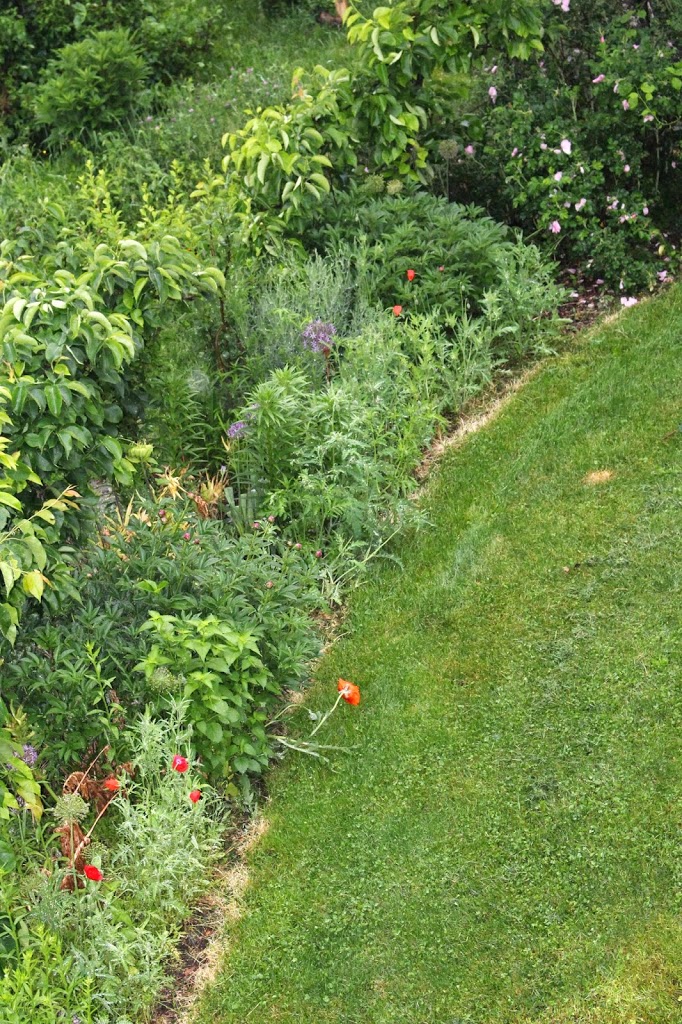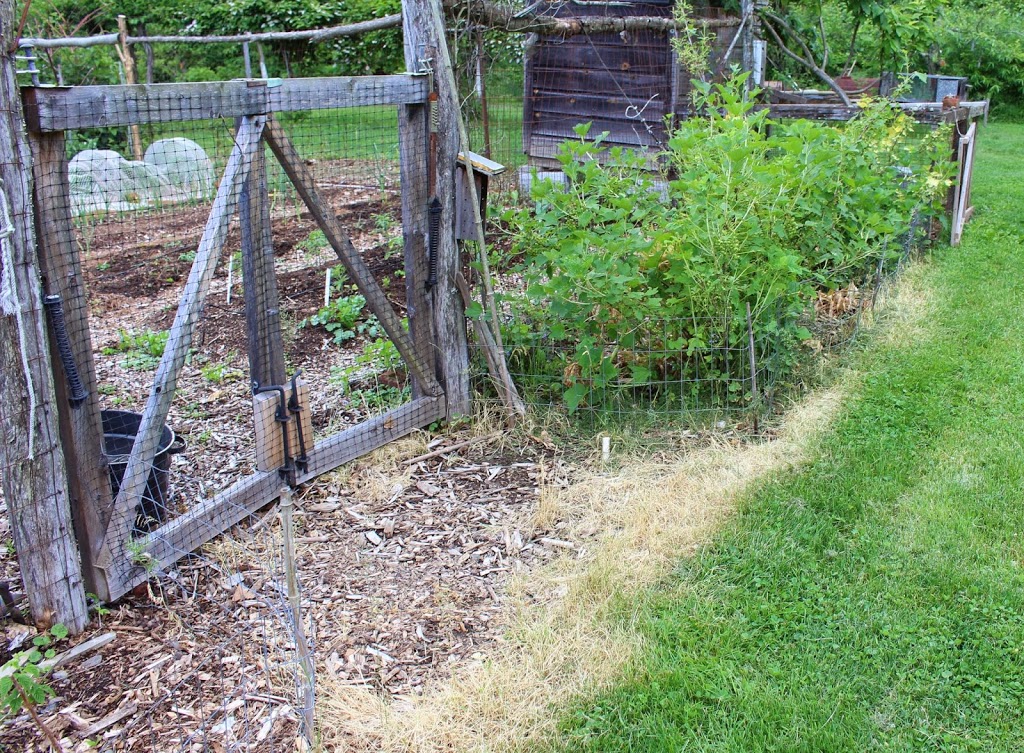Warm, Spring Weather is Coming
Poppies in Snow
Snow today (March 7) — a perfect time to plant seeds outdoors. Yes, really!
Obviously, not just any seed can be sown in snow. The ground is still frozen solid so I can’t easily cover seeds with soil. And cold temperatures are going to rot most seeds before the weather warms enough for them to germinate and grow.
I’m planting poppy seeds. It does seem harsh to sow a flower whose seeds are hardly finer than dust and whose petals are as delicate as fairy shawls. But early sowing is a must, because poppy seedlings thrive during the cool, moist weather of early spring. Covering the seeds with soil? No problem: Poppy seeds sprout best left uncovered. And because poppies don’t transplant well, their seeds are best sown right where the flowers are going to grow.
I’ll be sowing annual poppies, whose petals and leaves are more delicate than those of Oriental poppies. Corn poppy (Papaver rhoeas) once dotted the grain fields of Europe with its blood red flowers.
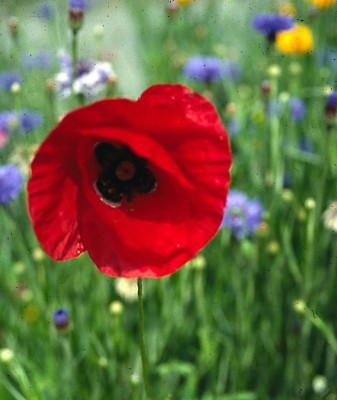
Corn poppy
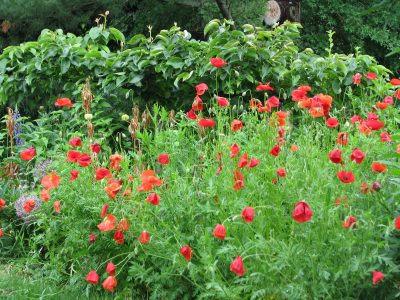
These flowers were immortalized in the poem Flander’s Fields, symbolizing lives lost in World War I. On Memorial and Veteran’s Day, red tissue-paper “corn poppies” are still distributed in memory of wars’ victims. Shirley poppy is a kind of corn poppy that has white lines along the edges of its petals. Corn and Shirley poppies begin blooming shortly after spring-flowering bulbs have finished their show, and continue blooming through July.
California poppy (Eschscholtzis californica) was named in honor of Dr. Eschscholtz, a Russian ship surgeon who found these bright orange flowers blanketing California hillsides. California poppy is a perennial but in our harsh winters must me treated like an annual and sown yearly.
Each winter, it doesn’t seem possible that the dust-like seeds I sprinkle atop the ground’s chilly, white blanket could ever amount to anything. Each spring, I’m amazed to see myriad of ferny poppy leaves, then flowers.
Warmer Spring in Greenhouse
The sun is getting brighter in the sky day by day so it’s mostly lack of heat that’s holding back plant growth. Outdoors, there’s not much to do about a lack of heat. In the greenhouse, it’s time to turn up the thermostat a bit.
Thus far, I’ve let greenhouse temperatures drop no lower than about 38 degrees F. During bright, sunny days, of course, temperatures push up into the 80s. 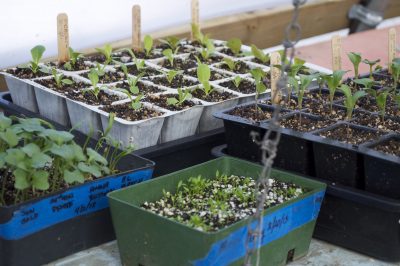 An exhaust fan keeps temperatures from getting too high, which, with lows in the 30s, would wreak havoc with plant growth, at the very least causing lettuce, mustard, and arugula to go to seed and lose quality too soon.
An exhaust fan keeps temperatures from getting too high, which, with lows in the 30s, would wreak havoc with plant growth, at the very least causing lettuce, mustard, and arugula to go to seed and lose quality too soon.
Adding just a few degrees at the bottom end of the temperature scale will spur growth in the newly sprouting lettuce, arugula, onion, and leek seedlings. This new minimum temperature of 43 degrees Fahrenheit strikes a congenial balance between plant growth and the cost and conservation of energy, propane in this case.
Bottom Heat for Seedlings
I’m not skimping on heat when it comes to germinating seeds. Seeds require more heat to sprout than seedlings need to grow. Too little heat and seeds either rot or sprout too slowly.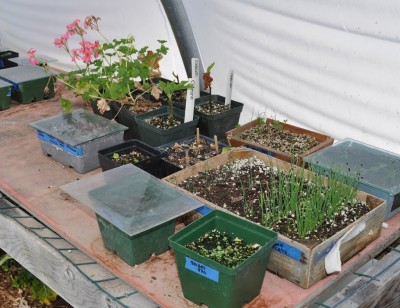
Fortunately, seeds need little or, in some cases, no light to sprout. Some people use the warmth atop their refrigerator for seed germination; the top of my refrigerator isn’t warm at all. Some people germinate their seeds at a warm spot in their house, such as near a heating duct; my home, heated mostly with wood, has no such oases. The temperatures near the wood stove swing over too wide a temperature range for good germination.
Years ago I invested in a thermostatically controlled heating mat, made especially for gardening. The mat is in the greenhouse, so even if greenhouse temperatures drop to 43 degrees F., my seed flats sit with their bottoms soaking up 75 degree warmth from the mat below.
That’s how much warmth is needed to get the pepper and eggplant seeds I sowed this week to sprout.


